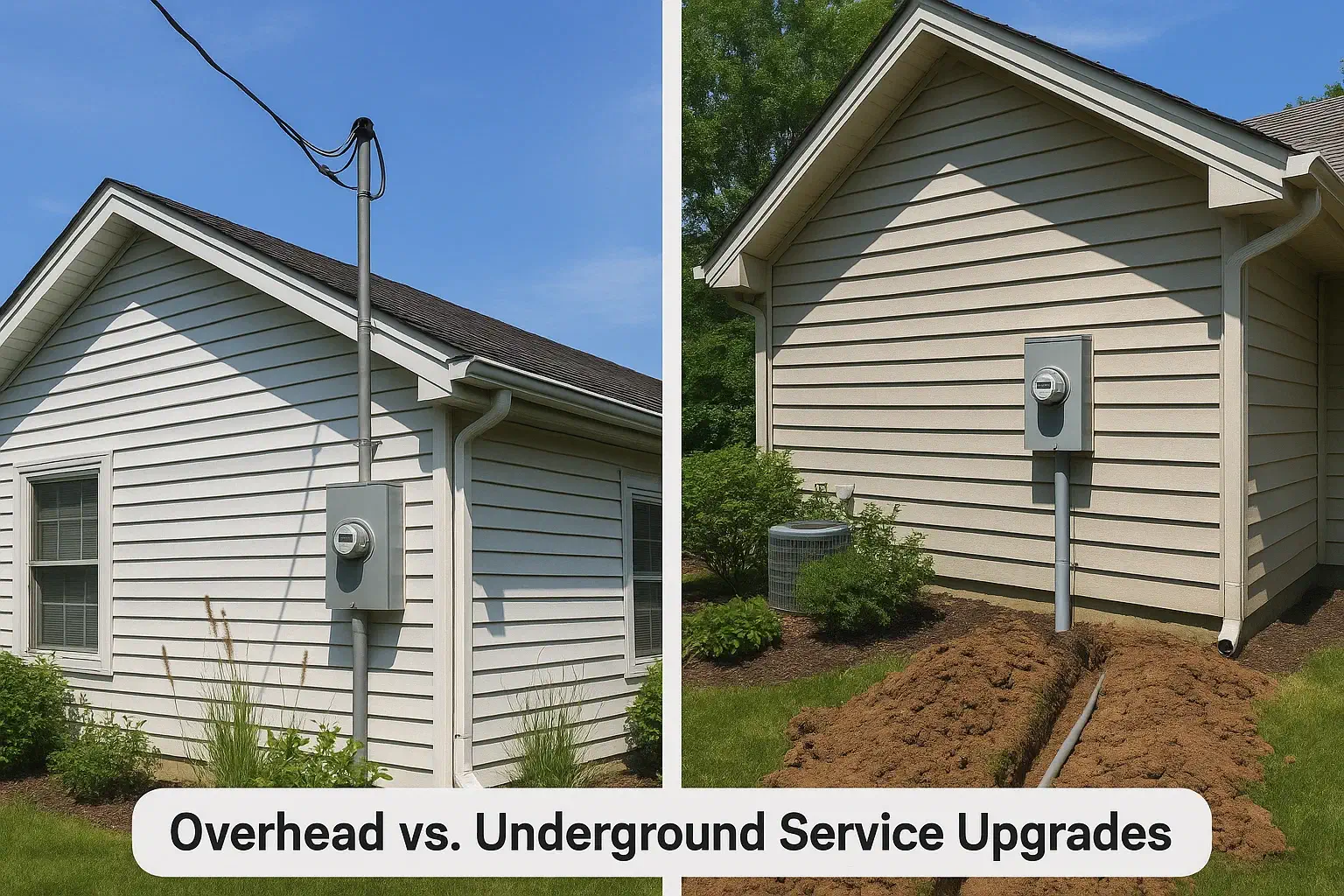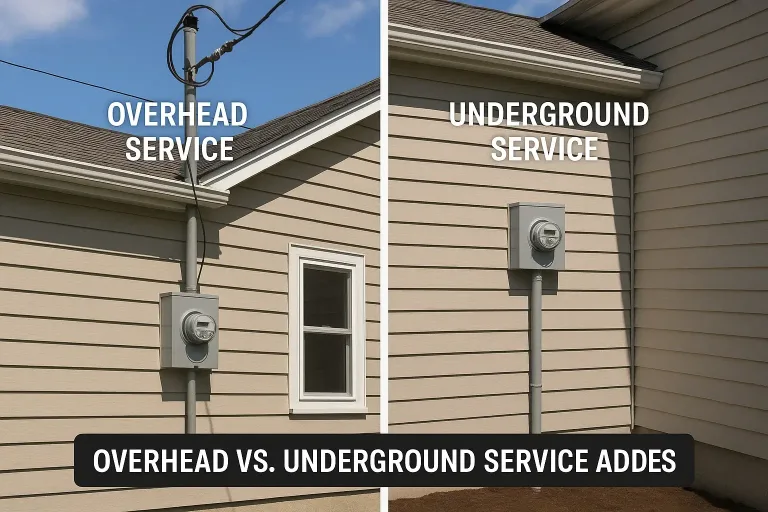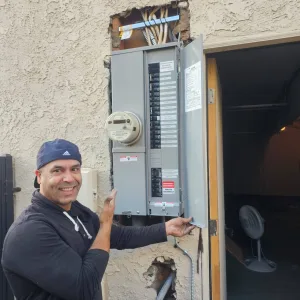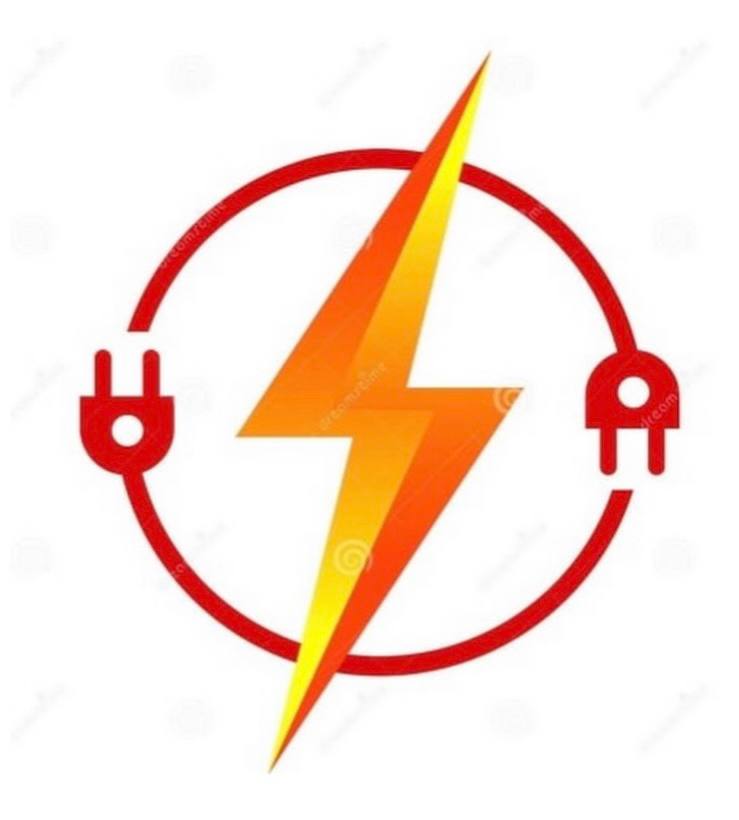
Overhead vs. Underground Service Upgrades
Thinking about upgrading your electrical service and torn between Overhead vs. Underground Service? This practical guide from Farashi Electric compares safety, reliability, cost, curb appeal, permitting, and timelines—specifically for homeowners (not engineers). You’ll see when overhead lines make sense, when underground wins, what “Overhead vs underground service upgrades in la price” typically includes, how choices interact with Meter-Main Combo vs Main Breaker, and what impacts Panel Upgrade Cost in Los Angeles. Use this to decide confidently and plan your electrical panel upgrade los angeles with fewer surprises.
Power upgrades should feel like progress, not a puzzle. The wires you don’t see (underground) versus the wires you do (overhead) change your budget, the look of your home, and how smoothly inspections go. Let’s make the decision simple—step by step, without the jargon.
Jump to Section
ToggleWhat Is the Difference Between Overhead and Underground?
Overhead service brings electricity to your home via poles and a service drop (the visible wires), connecting to a mast and meter at your exterior wall.
Underground service routes power through buried conduit to a ground-level meter pedestal or wall-mounted meter, with no visible aerial lines.
- Overhead: Faster, usually cheaper, easier to repair after storms. Visible lines and mast; can be vulnerable to tree branches and wind.
- Underground: Cleaner look, fewer wind/tree issues, protects aesthetics and can reduce outages from aerial hazards. Higher upfront cost; trenching and utility coordination required.

Understanding Overhead vs. Underground Electrical Panel (and the service equipment)
When people ask for “Understanding Overhead vs. Underground Electrical panel,” they’re really deciding how power reaches the service equipment (meter, main disconnect, and main panel). Your choice affects:
- Panel type & rating (e.g., 200 Amp Panel Upgrade in Los Angeles for EVs/heat pumps/ADUs).
- Enclosure and placement (clearances, height, and working space).
- Meter/Main configuration (classic Main Breaker panel vs. Meter-Main Combo).
- Inspection path and utility approval (slightly different for overhead vs. underground).
If you’re comparing Meter-Main Combo vs Main Breaker, a meter-main often streamlines upgrades (fewer enclosures, neater install), which can help with underground projects where space and aesthetics are priorities. Overhead can go either way; sometimes the existing layout favors a simple panel-only swap.
Overhead vs. Underground Service Upgrades in LA: The Decision Matrix
When overhead makes sense
- Budget-first projects: Overhead typically wins on initial price.
- Straight swaps: If your mast, weatherhead, and clearances are feasible, overhead is quick.
- Tight timelines: Repairs and upgrades can be completed faster in many neighborhoods.
When underground is the better play
- Curb appeal: No visible aerial lines; popular for front-facing remodels or historic façades.
- Tree/wind exposure: Fewer storm-related interruptions from overhead hazards.
- Future-proofing: If you plan landscaping, driveways, gates, or solar/battery upgrades, underground tidies the site and reduces future conflicts with aerial spans.
Local notes for Los Angeles & nearby cities
- Expect coordination with the utility for meter location (“meter spot”) and trench routes for underground.
- Overhead often avoids trenching and sidewalk/driveway cuts.
- Both paths require permits and inspection; underground typically involves more steps (trench, conduit, backfill, sometimes traffic control if near public sidewalks).
Overhead vs Underground Service Upgrades in LA Price: What drives cost?
Pricing varies by site, utility requirements, driveway/landscape conditions, and amperage. Here’s the straightforward breakdown:
- Utility coordination
- Underground: meter spot, trench approval, possible inspection milestones.
- Overhead: verify mast height, point of attachment, clearances.
- Civil work
- Underground: trenching, conduit, marking utilities, restoration (concrete/asphalt/landscape).
- Overhead: usually minimal civil work.
- Electrical scope
- 200 Amp Panel Upgrade in Los Angeles costs more than 100–125A due to equipment, conductors, and coordination.
- Meter-Main Combo vs Main Breaker can influence equipment count and labor.
- Restoration
- Underground requires backfill, compaction, and patching.
- Overhead often skips these expenses.
Safety, Code, and Inspection—Simplified
- Clearances: Overhead requires correct mast height and safe distances from roofs, windows, decks. Underground focuses on burial depth, conduit type, and sweep bends.
- Bonding & grounding: Same safety goals, different methods depending on panel and service path.
- Labeling: Meter/main labels, circuit directories, and service disconnect markings must be crisp for inspection.
- GFCI/AFCI & surge: A panel upgrade is the perfect time to add whole-home surge protection and verify required protective devices.
- Accessibility: Underground meter pedestals or wall meters must remain accessible; overhead masts need unobstructed reach for the drop.
Deciding between overhead and underground doesn’t have to be a coin flip or whatever your first quote suggests. If you send Farashi Electric a few clear photos of your existing meter, panel, and service path (pole, driveway, front yard), plus a quick note about future plans—EV, ADU, gate, solar—we’ll map out both options side by side. You’ll see how each path affects trenching, mast height, permits, utility coordination, and total cost, with a written scope instead of vague “it depends” answers.
Our Completed Panel Upgrade Projects
Overhead or Underground? Get a clear, side-by-side estimate.
Fast permitting, utility coordination, and clean installs by Farashi Electric.
Get My Estimate
Bahram Farashi
C-10 Licensed Electrician (CA Lic. #1102687) — 10+ years installing residential/commercial Electrical Services.
FAQs (straight answers)
Both are safe when installed to code. Underground avoids wind/tree issues; overhead avoids excavation risks. The “safest” choice is the one correctly designed for your property and inspected.
Buyers often prefer a clean façade and resilient infrastructure. While there’s no guaranteed dollar figure, underground improves curb appeal and may reduce nuisance outages from aerial hazards.
Not always. Load management, subpanels, or smart panels can help. A load calc tells the truth.
Overhead is typically quicker/cheaper to repair after storms. Underground repairs are rarer but can be costlier due to digging.
Yes—plan trench routes now (even if delayed) to avoid rework of driveways or landscaping.

